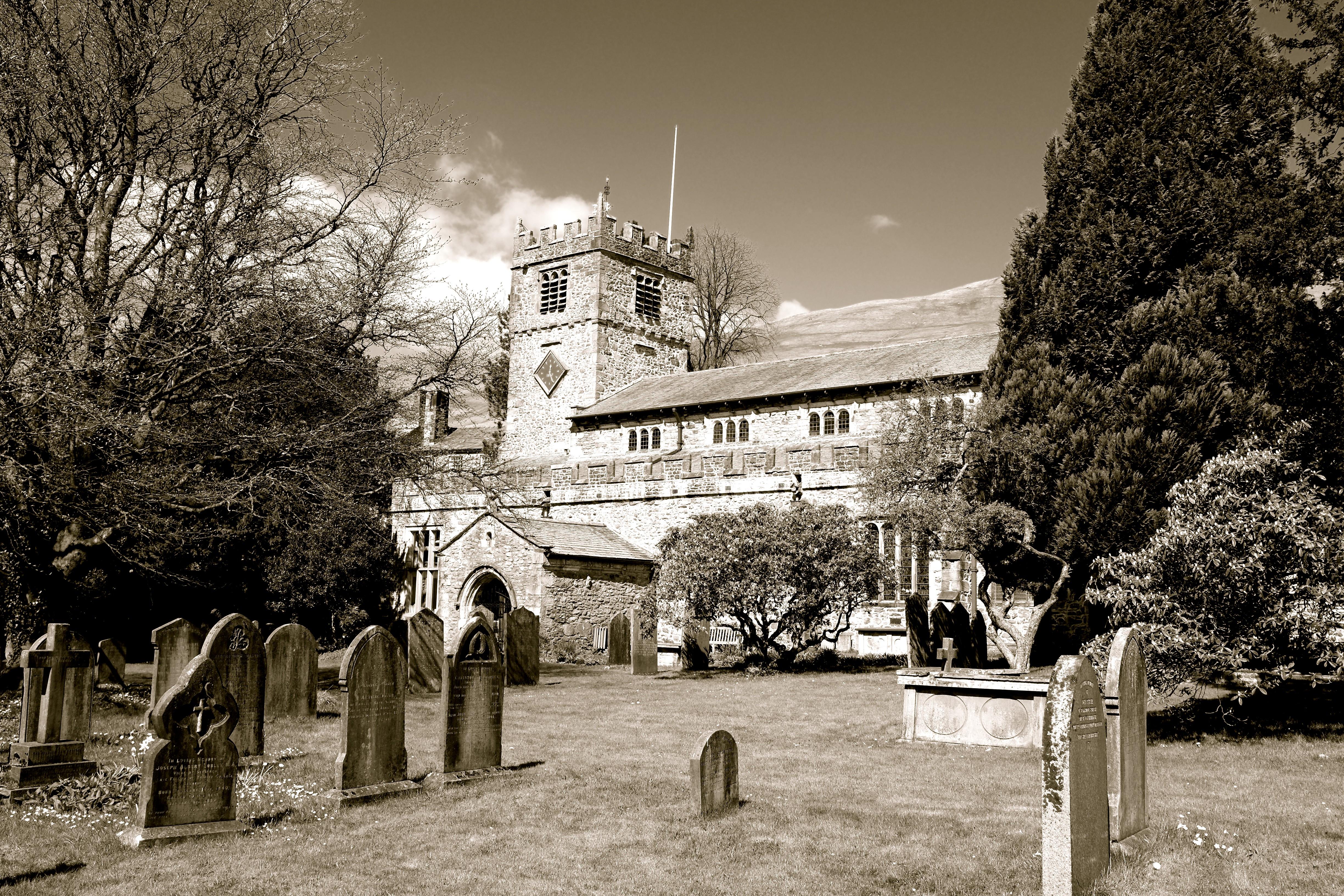Quaker Meeting House
Brigflatts, Cumbria
Brigflatts, near Sedbergh, Cumbria, is one of the most famous Quaker meeting houses, known and loved by Friends all over the world.

Set in the heart of Sedbergh in a beautifully maintained churchyard the church, which dates from 1130, is a haven of peace.
Sedbergh, Cumbria
Inside it has a warm welcome in a surprisingly light and airy space. It is home to the Sedbergh embroideries which depict the history of the Town. The east window, showing Jesus calling Andrew and Peter who are fishing on Lake Galilee is a remarkable picture in stained glass.
Although no church was recorded in the Domesday Book it is generally accepted that the present building dates from 1130 and was subsequently enlarged adopting its present shape in 1350 when the tower was added.
The inner north doorway is probably the earliest surviving part of the church and this suggests that there has always been a north aisle. In the late 1800s a major restoration was carried out under the architects Paley and Austin. Further restoration work was undertaken in the period 1995-2005 and the chancel extended in 2010 to create a performance area and a space for a forward altar.
The Victorian restoration raised the roof and evidence of this can be seen in the blocked up clerestory windows on the north side of the nave and redundant corbels in the aisles. At the same time that the roof was raised the nave was lowered to give the chancel more presence.
The pillars and arches pose problems when trying to date them. For although on first sight the church seems to be an object of symmetry there are eight arches on the north side but only six on the south and many of the pillars are of different designs.
The windows are thought to date from the 15th and 16th centuries but the stained glass is almost all Victorian including the east window by Victor Milner.
The pews and pulpit are purported to be by Waring and Gillow but it is likely that a local firm, Punch & Son, made them. Each pew end has a different carving. The font which is made from Dent marble is impressive and has a carved wooden cover suspended from the roof beams.
In 1897 a ring of eight bells by Taylors of Loughborough was installed in an H frame in two tiers. The tenor in the key of F weighs just over 15 cwt.
The west end of the south aisle was converted into a parish room in 1983 and a kitchen and toilets provided. In the parish room there is a monument erected in thanks to Braithwaite Otway who supported the commoners when the Lord of the Manor tried to enclose Bluecaster.
In the south aisle there is a relic from a yew tree under which George Fox, the Quaker, preached when he visited Sedbergh in 1652.
Brigflatts, Cumbria
Brigflatts, near Sedbergh, Cumbria, is one of the most famous Quaker meeting houses, known and loved by Friends all over the world.
Vale of Lune, Cumbria
A railway church.
Sedbergh, Cumbria
Striking in its symmetry with its central round headed doorway flanked by matching round headed windows, Cautley Wesleyan chapel is a good example of its type and date.